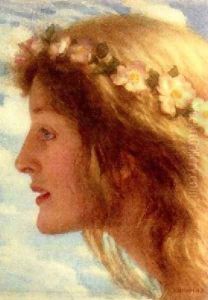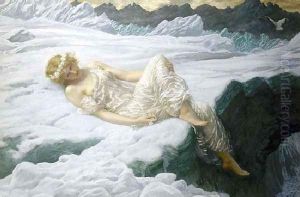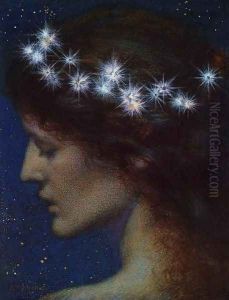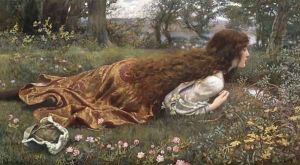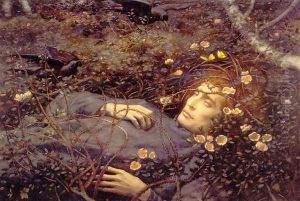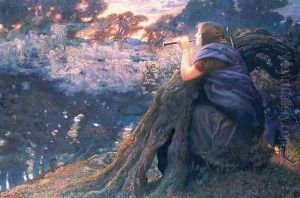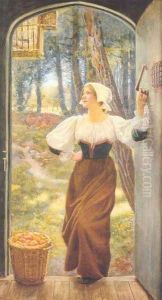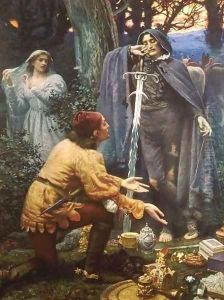Edward Robert Hughes R.W.S. Paintings
Edward Robert Hughes was a talented English painter who is best known for his works that reflect the Pre-Raphaelite style, as well as his contributions to the later phases of the movement. Born on November 5, 1851, in London, he embarked on his artistic journey at a young age, showing a keen interest in the visual arts.
Hughes began his formal training at the Royal Academy Schools after being encouraged by his uncle, also an artist, Arthur Hughes, who was an associate of the Pre-Raphaelite Brotherhood. Edward Hughes's works often depicted subjects from literature, mythology, and Shakespearean plays, infused with a dreamlike quality that became a signature of his style.
His meticulous approach to painting, combined with his fascination with medievalism and romanticism, led to the creation of enchanting and ethereal works. Some of his most acclaimed paintings include 'Midsummer Eve', 'Night with her Train of Stars', and 'Ophelia'. These works are characterized by their vibrant colors, intricate detail, and the incorporation of symbolic elements.
Hughes also worked with another Pre-Raphaelite artist, William Holman Hunt, assisting him with the version of 'The Light of the World' at St Paul's Cathedral. His dedication to the Pre-Raphaelite aesthetic and his mastery of watercolor technique earned him the designation R.W.S. (Royal Watercolour Society).
Despite his success, Edward Robert Hughes remained a relatively private individual, and his work did not gain the same level of widespread fame as some of his contemporaries during his lifetime. However, his paintings have since been recognized for their beauty and craftsmanship, and they continue to be admired by art enthusiasts and collectors.
Edward Robert Hughes passed away on April 23, 1914, leaving behind a legacy of art that captures the romantic and mystical spirit of the Pre-Raphaelite movement. His contributions to art history are celebrated for their poetic beauty and technical excellence.
